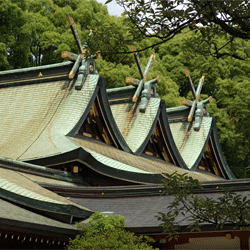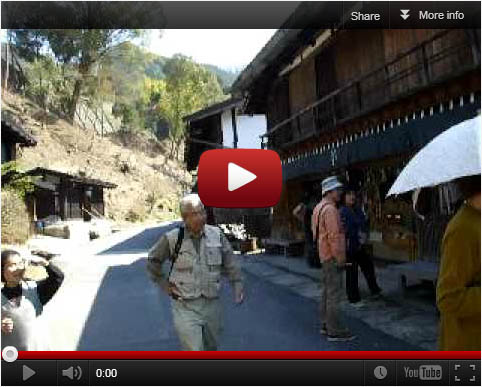Jan 11, 2011
The Luckiest Man is at Tōka-Ebisu Festival in Hyogo Prefecture
Nishinomiya Jinja is a Shinto shrine in Nishinomiya, in Hyogo Prefecture near Kobe, Japan. Nishinomiya Jinja is the main shrine representing the Ebisu sect of the Shinto religion and its 3,500 shrines. It is known locally as “Ebessan,” and more broadly as “Ebisu Jingu.” Two parts of the shrine itself are of note historically: the front gate (omote-daimon), colloquially kmown as the “Aka-mon, or red gate,” and “oneri-bei,” a large plaster wall are both designated Important Cultural Properties in Japan to be cherished and protected. While the original date of establishment has been lost to history, the shrine has been mentioned in documents since at earliest the Heian Period, between 794 and 1185 C.E
Every January 10th Nishinomiya Jinja hosts its most famous attraction, the annual “Luckiest Man,” or Tōka-Ebisu Festival, as a part of New Year festivities to pray for good business opportunities. The race’s traditions began during the Edo period, in celebration of one of the seven gods of fortune, Ebisu. Every year more than 6,000 contestants gather at the main gate of the shrine on a crisp winter morning to await the drums that signal the opening of the shrines main gate. Once the gate is opened, the assembled masses rush the 230 meters to the main hall of the shrine. Traditionally, the first three to the hall are bestowed the title “lucky men,” while the first person gets to be the “luckiest man.” I am not sure what that brings you perk wise, but it sounds pretty cool.
Take a look at the video below; it gives you a pretty good idea of the mad scramble that is this festival, and makes it so famous!
Jan 05, 2011
Magome Tsumago: A Glimbse of Edo Japan Near Nagoya
One of my favorite day trips from Nagoya is to Magome and Tsumago in Nagano Prefecture. They are two restored and preserved Edo-period way stations on the Nakasendo in Nagano Prefecture. Nakasando is similar to the more famous Tokaido, both very old roads that connected Kyoto with what is now Tokyo. The two and half hours it takes to walk between the two stations is filled with very historic buildings and scenery reminiscent of the Edo period, except for the slightly more touristy feel of Magome, which boasts a plethora of good places to eat and buy knick knacks.
Access
- From Nagoya Station take the Shinano Express on the JR Chuo Line to Nagano and get off at Nakatsugawa. From there take a local train (futsu) to Nagiso or an hourly bus to Magome.
- There are buses from Nagiso to Tsumago and an infrequent bus runs between Magome and Tsumago.
- There are Meitestu Highway buses from Nagoya Station to Magome (90 mins)
- By car take Route 19 to Nakatsugawa and Nagiso or by Chuo Expressway the journey is about 1 hour 15 mins in normal traffic.
See a longer article about this destination on the Japan Visitor Blog
Here is a video that will give you some idea about what you can see on a trip to Magome and Tsumago.


